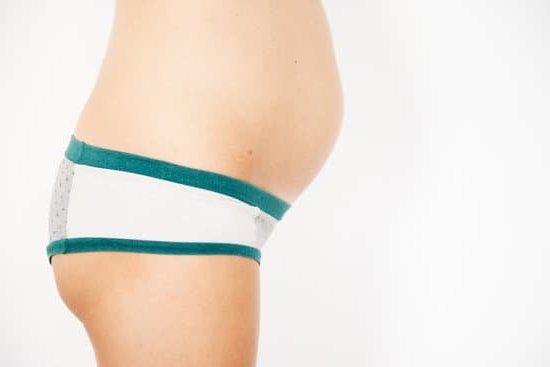When does pregnancy start showing? This question is often on the minds of many expectant mothers as they eagerly anticipate the physical changes that come with carrying a child. The journey of pregnancy is a unique and individual experience for each woman, with early signs varying from one person to another. From fatigue and morning sickness to cravings and mood swings, the onset of pregnancy symptoms can differ in intensity and timing.
While some women may notice subtle signs of pregnancy early on, such as tender breasts or heightened sense of smell, others may not experience any noticeable symptoms until later in their first trimester. As the body begins to adjust to the presence of a growing fetus, physical changes become more apparent over time. However, the timeline for when a pregnant woman’s belly starts to visibly grow can vary depending on various factors.
Factors such as body type, genetics, and overall health can play a role in when pregnancy starts showing. Additionally, whether it is a woman’s first pregnancy or subsequent pregnancies can also influence how soon her baby bump becomes noticeable.
As women navigate through the different stages of pregnancy, they may find themselves facing emotional and mental changes along with their physical transformation. In the following sections, we will delve into these topics and explore tips for dressing comfortably during early pregnancy and coping with any body image concerns that may arise.
When Does Pregnancy Start Showing
When a woman becomes pregnant, one common question that may arise is, “When does pregnancy start showing?” The timeline for when a pregnant woman’s belly starts to visibly grow can vary from woman to woman. Typically, most women start showing between 12 and 16 weeks of gestation. However, factors such as body type, first pregnancy vs. subsequent pregnancies, and overall health can play a significant role in when the baby bump becomes noticeable.
Body type plays a crucial role in determining when a pregnant woman starts showing. Women with a smaller frame or those who are more slender may notice their pregnancy showing earlier than women with a larger build. Additionally, women who have been pregnant before may show earlier in subsequent pregnancies due to their abdominal muscles being more relaxed after previous pregnancies.
Apart from body type and previous pregnancies, overall health can also impact when pregnancy starts showing. Women who are carrying multiples or have excessive amniotic fluid may have a larger baby bump earlier in their pregnancy. Furthermore, factors like bloating or constipation can affect how soon a woman appears visibly pregnant.
It’s important to remember that every woman’s body is unique, so the timeline for when pregnancy starts showing can vary significantly. It’s essential for women to embrace these changes positively and focus on the exciting journey of growing new life within them.
Factors Affecting Pregnancy Showing
During pregnancy, one of the most common questions that women have is: “When does pregnancy start showing?” While there is no definitive answer as each woman’s body is different, there are several factors that can influence when a pregnant woman’s belly starts to visibly grow. Here are some key factors to consider:
- Body Type: Women with a smaller build may notice their pregnancy starting to show earlier than those with a larger frame. This is because there is less space in a smaller abdomen for the uterus to expand without becoming visible.
- First Pregnancy vs. Subsequent Pregnancies: In general, first-time mothers may take longer to show as their abdominal muscles are tighter and more resilient. On the other hand, women who have had previous pregnancies may show sooner due to muscle memory and laxity in the abdominal wall.
- Overall Health: A woman’s overall health and fitness level can also play a role in when pregnancy starts showing. Women who are physically active and have strong core muscles may show later compared to those who lead a more sedentary lifestyle.
It’s important to remember that each woman’s pregnancy journey is unique, and there is no right or wrong timeline for when pregnancy should start showing. Some women may start showing as early as 12 weeks, while others may not show until well into their second trimester. No matter when it happens, what matters most is the health of both the mother and the baby.
Additionally, factors such as genetics, weight gain during pregnancy, and even the position of the baby can all influence when a pregnancy becomes noticeable. It’s essential for women to listen to their bodies, embrace the changes that come with pregnancy showing, and seek support from healthcare providers if they have any concerns about their physical or emotional well-being during this time.
Emotional Changes
During pregnancy, women often experience a whirlwind of emotions and mental changes as their bodies undergo significant transformations. When the physical signs of pregnancy start showing, it can bring about a mix of joy, anxiety, excitement, and even fear for many expectant mothers. Understanding and acknowledging these emotional changes is crucial for both the well-being of the mother and the unborn child.
To navigate through these emotional ups and downs during pregnancy showing, consider the following tips:
- Seek Support: Whether it’s from your partner, family members, friends, or healthcare provider, having a strong support system in place can help you cope with the emotional rollercoaster that comes with visible pregnancy.
- Practice Self-Care: Take time to focus on self-care activities that bring you comfort and relaxation. This could be anything from gentle exercises like prenatal yoga to indulging in a soothing bath or massage.
- Communicate Openly: Don’t hesitate to express your feelings and concerns to your loved ones or seek professional help if needed. Open communication can help alleviate any pent-up emotions and anxieties.
Additionally, as your pregnancy starts showing more prominently, remember that it is perfectly normal to have mixed emotions. Embrace this transformative journey with kindness towards yourself and allow yourself to experience all the feelings that come along with it.
Fashion Tips for Early Pregnancy
Pregnancy is a beautiful journey, but it can also bring about various changes in a woman’s body, including her fashion choices. One common question that many expectant mothers have is: when does pregnancy start showing?
For most women, their belly may start to visibly grow around the second trimester, typically between weeks 12 to 16. However, this timeline can vary based on individual factors such as body type, muscle tone, and whether it is the woman’s first or subsequent pregnancy.
During the early stages of pregnancy when the baby bump may not be so obvious, it can be challenging to figure out how to dress comfortably and stylishly. One tip is to invest in maternity wear that offers both comfort and style.
Opt for stretchy fabrics like cotton or jersey that will accommodate your growing belly while still making you look fashionable. Empire waist tops and dresses are also great options as they flow over your belly without emphasizing it too much.
Accessories can also play a key role in enhancing your style during early pregnancy when you may not be showing much. Statement jewelry, scarves, and belts worn above or below your bump can draw attention to other parts of your body without focusing on the midsection.
Layering clothing pieces like cardigans or blazers can add depth to your outfit while allowing you to adjust for temperature changes that often occur during pregnancy. Remember, the goal is to feel comfortable and confident in what you wear as your body goes through this incredible transformation.
| Fashion Tips | Benefits |
|---|---|
| Invest in maternity wear | Offers both comfort and style |
| Opt for stretchy fabrics like cotton or jersey | Accommodates growing belly while remaining fashionable |
| Accessories like statement jewelry and scarves | Draw attention away from midsection |
Dealing With Body Image Issues
Self-Acceptance and Body Positivity
During pregnancy, many women may experience negative body image concerns as their bodies undergo significant physical changes. It is important to practice self-acceptance and focus on the beauty of creating life rather than unrealistic societal expectations. Embracing body positivity can help shift the focus from external appearance to the incredible process of growing a baby.
Seeking Support
It is crucial for pregnant women who are struggling with body image issues to seek support from their partners, family, or healthcare providers. Talking about feelings of insecurity or self-doubt can help alleviate some of the emotional burden and provide a sense of relief. Additionally, joining support groups or online communities for pregnant women can create a safe space to share experiences and receive encouragement.
Prioritizing Self-Care
Taking care of both physical and mental well-being is essential during pregnancy, especially when dealing with body image issues. Engaging in activities that bring joy and relaxation, such as prenatal yoga, meditation, or gentle exercises, can boost self-esteem and reduce stress levels. It’s also important to nourish the body with nutritious foods and stay hydrated to promote overall health and well-being. Remember that self-care is not selfish but necessary for a healthy pregnancy journey.
Sharing Experiences
During pregnancy, each woman experiences unique changes in her body and emotional state. The timing of when pregnancy starts showing varies greatly among individuals, leading to different experiences and reactions. It can be insightful to hear personal anecdotes from women who have gone through pregnancy and how they navigated the process of their baby bump becoming visible.
Early Showers vs Late Bloomers
Some women may notice signs of pregnancy showing as early as the first trimester, while others may not have a noticeable baby bump until well into the second trimester. Factors such as body type, muscle tone, and the position of the uterus can all influence when a woman’s pregnancy becomes visibly apparent.
It is fascinating to hear stories from mothers who were “early showers” or “late bloomers” in terms of their pregnancy showing, illustrating the diversity of experiences during this time.
Mixed Emotions
The moment when a woman’s pregnancy starts showing can be met with a mix of emotions. Some may feel excitement and joy at seeing physical evidence of their growing baby, while others may experience anxiety or concerns about body image changes. By sharing personal anecdotes, women can connect with each other over these shared emotional experiences and find support in knowing that these feelings are normal during this transformative period.
Support and Encouragement
Ultimately, hearing personal stories from women who have gone through pregnancy and when they started showing can provide support and encouragement for expectant mothers. Knowing that each woman’s journey is unique can help alleviate any anxieties or comparisons that may arise. By celebrating these differences and sharing in one another’s experiences, women can bond over the shared milestones of pregnancy showing while embracing the individuality of their own paths.
Conclusion
In conclusion, the timeline for when pregnancy starts showing varies significantly among women due to factors such as body type, overall health, and whether it is their first or subsequent pregnancy. While some may notice visible changes in their belly as early as 12 weeks, others may not start showing until later in their pregnancy journey.
It is essential to remember that every woman’s body is unique, and there is no right or wrong timeline for when pregnancy should start showing.
As women experience the physical changes that come with pregnancy showing, it is crucial to acknowledge and address the emotional and mental transformations that accompany them. The journey of pregnancy is not just about the physical changes but also about the internal growth and development as a mother-to-be. It’s okay to feel a range of emotions during this time, and seeking support from loved ones or professionals can be tremendously helpful in navigating these changes.
Ultimately, women should embrace their changing bodies and celebrate the miracle of new life growing within them. Whether showing early on or not until later in the pregnancy, each woman’s journey towards motherhood is uniquely beautiful. Remember to listen to your body, practice self-care, and trust that you are exactly where you need to be on this remarkable journey into motherhood.
Frequently Asked Questions
Can You Start Showing at 8 Weeks?
It is not typical for a pregnant belly to start showing at 8 weeks. In most cases, a woman’s baby bump becomes noticeable around the second trimester, usually between 12-16 weeks of pregnancy. However, every woman’s body is different, so some may start showing earlier or later.
What Week of Pregnancy Does It Start to Show?
The pregnant belly usually starts to show between weeks 12 and 16 of pregnancy. This is when the uterus begins to expand beyond the pelvic area and becomes more prominent. Factors such as the woman’s body type, muscle tone, and whether it is her first pregnancy can influence when she starts showing.
What Does a 1 Week Pregnant Belly Look Like?
During the first week of pregnancy, a woman’s belly does not typically look any different from before conception. At this early stage, the fertilized egg has just implanted in the uterus lining, and there are no visible signs on the outside. Most women will not see any physical changes until later in their pregnancy.

Welcome to my fertility blog. This is a space where I will be sharing my experiences as I navigate through the world of fertility treatments, as well as provide information and resources about fertility and pregnancy.





